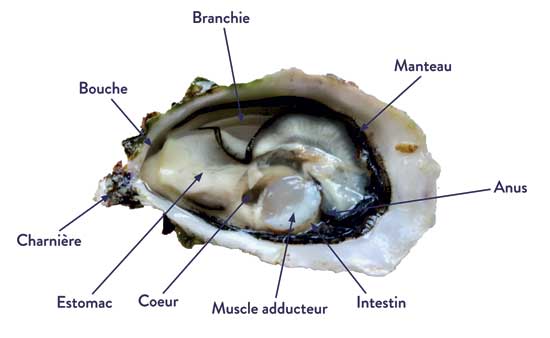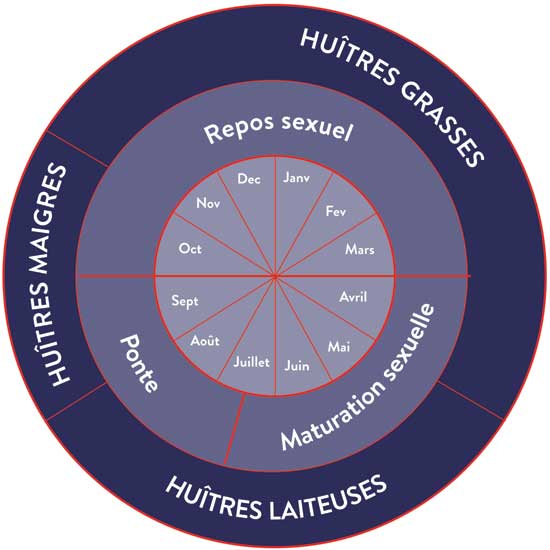Oysters are molluscs of the bivalve family.
The shell is there to protect the body of the oyster. Its size varies according to the species and the place where it is found and, in the case of farmed oysters, the farming techniques that have been used. The colour of the shell depends on the environment in which the oyster is grown. It is the mantle, a thin veil of flesh, which provides for the growth and development of the shell. Oysters can find all the elements they need to form their shells in seawater. It is thanks to their adductor muscle that an oyster opens and closes its shell. This way, the oyster can keep its shell closed when out of the water and therefore protect itself from predators.

The gills are the respiratory organs of the oyster. They are also involved in the intake of food. On the surface of the gills are particles suspended in water, which have been filtered out beforehand. These particles are then coated with mucus and carried to the mouth by the cilia on the gills, which make them move by beating.
Oysters eat phytoplankton.
The oyster is an hermaphrodite. It changes sex after each season or after each issuance of seed. During the first year of reproduction, it is usually male.
In the spring, the oyster then prepares its gametes. In summer, when conditions are good and there are good levels of salinity (a salinity lower than the natural salinity of the sea) as well as a water temperature of around 22 °C, it releases them.
The oyster can spawn one or more times during the summer. During this time, the oyster is said to be milky because its gametes are white. Crassostrea gigas oysters (those reared in the Bay) release between around 20 and 100 million unfertilised eggs, compared with only 500,000 to 1,500,000 for Ostrea edulis (the native oyster of the Bay). The formed larvae are between 1/10th and 2/10th of a millimetre. Only 10% of them survive. They are carried by the currents and seek out a place to settle and develop.
